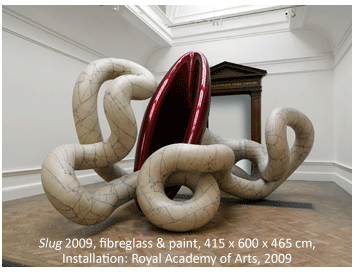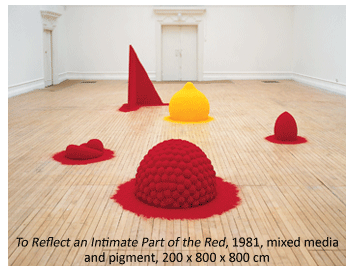- Prelude
- Editorial
- Manjit Bawa
- Husain's Calcutta
- Vivan's Visionary Reconstruction of History at Victoria Memorial, 1998
- The Remaking of Indian Painting
- Picasso Re-visited
- Benodebehari Mukherjee: A Recluse and the Centenary Show
- In Past and Present Continuum Speaking to Thota Vaikuntam
- The Importance of Being Husain
- Image-making to Image-circulation: Implicated Image(ry)
- 153 Years Old yet Young at Heart: Mumbai's Sir JJ School of Art
- Two Decades: A Critical Insight by an Art Critic and an Artist
- Biedermeier Style: Biedermeier Furniture
- Vacheron Constantin
- The Irony of Andy Warhol
- Then and Now: An Indian Perspective to the Art Market 1990-2010
- Pablo, Andy, Here I Come
- What Happened and What's Forthcoming
- Bid's Got Hammered?
- Anish Kapoor at National Gallery of Modern Art in Delhi and Mehboob Studio in Mumbai
- Tribute to Hemanta Misra: the “Calcutta Group” Painter
- Art Events Kolkata
- Mumbai Art Sighting
- Art Bengaluru
- Exploring the Riverine Culture of Bengal
- Alternative art practices define Bangalore
- India Art Summit Turns Three
- An Aesthetic Fair
- SSVAD: A New Arts Centre in Santineketan
- Visible Invisible by Siraj Saxena
- A Fleeting World : Paintings by Sunil De
- Previews
- In the News
ART news & views
Anish Kapoor at National Gallery of Modern Art in Delhi and Mehboob Studio in Mumbai
Volume: 3 Issue No: 12 Month: 1 Year: 2011
The Month that was
by Uma Prakash
 “Son of India, pride of Britain and wonder of the world” was India's Secretary for Culture, Jawhar Sircar's description of India born UK based Anish Kapoor, one of the world's most acclaimed sculptors. In November 2010 Congress president Sonia Gandhi inaugurated his exhibition at the National Gallery of Modern Art in Delhi. Some of his recent works were simultaneously exhibited at Mehboob studios in Mumbai.
“Son of India, pride of Britain and wonder of the world” was India's Secretary for Culture, Jawhar Sircar's description of India born UK based Anish Kapoor, one of the world's most acclaimed sculptors. In November 2010 Congress president Sonia Gandhi inaugurated his exhibition at the National Gallery of Modern Art in Delhi. Some of his recent works were simultaneously exhibited at Mehboob studios in Mumbai.
Kapoor, son of an Indian father and a Jewish mother, who returned home after 56 years was welcomed and celebrated by the Ministry of Culture, Government of India and National Gallery of Modern Art India, British Council and Lisson Gallery, in association with Louis Vuitton and the Tata Group.
While the National Gallery of Modern Art surveys Kapoor's sculptural work from his whole career alongside a large group of architectural models, the Mehboob Studio installation presents major new works in both wax and stainless steel. Each exhibition focused on different aspects of Kapoor's oeuvre revealing an astounding creative energy. Both exhibitions featured works which were included in the artist's recent exhibition at the Royal Academy in London.
Kapoor was the first living artist to have taken over the whole of the Royal Academy in London last year for his solo exhibition. A colossal blob of blood red wax weighing 20 tons titled Svayambhu (or self generated) dragged itself through the Royal Academy taking on the shape of its surroundings. The artist rose to fame with his popular public inspirational art works like Chicago's Cloud Gate, a large structure that reflects the sky, environment and the people who pass through it. He has taken his art to the masses allowing the common man to participate in his creation. Soon a new Tower of Babel will shudder with a thousand voices beside the Olympic Park, when the landmark Arcelor Mittal Orbit opens in 2012.
Born in Bombay Kapoor finished school from Doon School, Dehra Doon. After a brief time working on an Israeli kibbutz he moved to London where he trained as an artist at Hornsey College of Art (1973-77) and then at Chelsea School of Art (1977-78).
In 1979 Kapoor's three week trip back to India impacted his work.  The piles of raw pigment he encountered in markets and by roadside shrines giving birth to 1000 Names. Images from calligraphy, relief carvings and tapestries further fired his imagination.
The piles of raw pigment he encountered in markets and by roadside shrines giving birth to 1000 Names. Images from calligraphy, relief carvings and tapestries further fired his imagination.
The same trend continued in the bright, yellow and red pigment images in To reflect an intimate part of the red drawing a subtle line between abstraction and narrative. The shapes give the impressions of a seed pod, breast, mosque dome or ziggurat.
While Kapoor gives them a three-dimensional form he allows a generous dusting of pigment, which spills onto the floor like a halo.
“Whenever I have a difficulty, I always go back to the pigment pieces. I always look at them again. When I was making them, I felt more alive than I'd perhaps ever been in my life, in the sense that it was a daily invention. At that moment, I had no idea where they were coming from. It's as if something opened in me and these wonderful things were just pouring out-it was great, wonderful; it was terribly exciting.”
(Anish Kapoor in conversation with Greg Hilty and Andrea Rose in Anish Kapoor's catalogue.).
Kapoor maintains that in India we have a deep connection with abstract art from Tantric art onwards. A sense for the abstract and intangible is imbued in his work. His earlier visits to Jantar Mantar and the caves as a teenage were stored in his memory only to emerge when he was working on certain pieces.
“I remember Jantar Mantar from later on. I was probably fourteen or fifteen when I saw it for the first time and I remember being mystified by these very strange objects. Throughout the period that I was making pigment pieces it featured pretty significantly in my visual language because they seemed to form, I suppose, objects that relate to the sky. They are fundamentally observatories rather like Stonehenge or New Grange in Ireland.”
(Anish Kapoor in conversation with Greg Hilty and Andrea Rose in Anish Kapoor's catalogue.)
“Mirror sculpture has been historically understood since the Egyptians. All have been convex form camouflaging space.  Concave form has only been used in Science” said the artist who ingeniously uses both the concave and convex in a flowing piece called S-Curve. It plays visual games with onlooker. When light hits the concave hollows images are swallowed and flipped upside-down, while the convex bulges spit them back again. It requires the viewer to walks around it, following the direction of the wave.
Concave form has only been used in Science” said the artist who ingeniously uses both the concave and convex in a flowing piece called S-Curve. It plays visual games with onlooker. When light hits the concave hollows images are swallowed and flipped upside-down, while the convex bulges spit them back again. It requires the viewer to walks around it, following the direction of the wave.
Kapoor, a Buddhist, brings an ethereal sense to Non-Object an upturned trumpet, with the round base on the ground. However it points to the sky, to a peak no wider than a pinprick. The flawlessly smooth steel forms reflections that appear to flow into the atmosphere only to stagger the viewer as he sees his recurring reflections. It creates its own aura, and, indeed the Non-Object has a life beyond its physical formation.
Kapoor's brilliance and Indian heritage have combined to make him one of the most engaging and unique artists in the world. His range covers the movement of real objects in wax to highly polished surfaces taking on different shapes like spirals, cones, trumpets always using primary colors like crimson, cobalt blue, and canary yellow.
Illusion is vital to Kapoor's work. Avery unusual piece is Iris. It's mysterious as the supporting structure is hidden, and the convex mirror emerges effortlessly from the wall, almost like the human eye as it appears in the face. The piece goes deep through the wall into which it is set. Iris is all-seeing: it reflects all its surroundings, distorting and reproducing them in miniature. Once again the artist plays with illusion in When I am pregnant which may appear to be a simple white bump on the wall only to disappear when viewed from a distance. This white on white object was inspired by one of the oldest and sacred rock on Earth called Ayers Rock or "Uluru," as termed by Aborigines.
Shooting into the Corner at the Mehboob Studio was a completely awesome happening. Just viewing tones of red wax being shot on to a wall from a canon is an incredible experience. An operator mans the canon and shoots wax missiles into the corner of the wall creating noise, sensation and muck. The Mehboob Studio seemed very appropriate as this Bollywood studio has been the setting for numerous blood thirsty encounters in films. “The film studio belongs to Mumbai. Films like Mother India were shot here. This is the space from where things emanate. I would like to bring the public into this space,” said Kapoor at the opening. Ironically the opening coincided with the 2nd anniversary of the terror assault in Mumbai unwittingly adding a new dimension to Kapoor's creation.
An operator mans the canon and shoots wax missiles into the corner of the wall creating noise, sensation and muck. The Mehboob Studio seemed very appropriate as this Bollywood studio has been the setting for numerous blood thirsty encounters in films. “The film studio belongs to Mumbai. Films like Mother India were shot here. This is the space from where things emanate. I would like to bring the public into this space,” said Kapoor at the opening. Ironically the opening coincided with the 2nd anniversary of the terror assault in Mumbai unwittingly adding a new dimension to Kapoor's creation.
There is magic in the engineering of Sky Mirror. Mounted at a 60-degree angle from the ground the Sky Mirror is a visual treat as its surface continuously reflects the different images of nature in a magnificent way. The concave side of the mirror is facing up, and like an inverted satellite dish, receives images of the sky and beams them back heavenwards creating reflections that appear upside down. Once again Kapoor's ability of drawing his audience into his work makes his work very unique.
Although Kapoor has been accused of denying his Indian heritage his link with his place of birth is inevitable. At the opening in Delhi he said “I have internalized and mythologized the country in a very real way.” On different occasions he went on to say “Red is a color I've felt very strongly about maybe because red is a very Indian color. I am Indian. My sensibility is Indian. I welcome that. I rejoice in that, but the great battle is to occupy an aesthetic territory that isn't linked to nationality.” As we rejoice in Kapoor's work we hope to see an installation of Anish Kapoor in a public area in India.
1] Photo : Wilfried Petzi, Courtesy the artist
2] Photo: David Regen, Courtesy: the artist and Gladstone Gallery
3] Photo: Dave Morgan, Courtesy: the artist and Royal Academy of Arts
4] Photo: Andrew Penketh, London